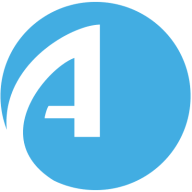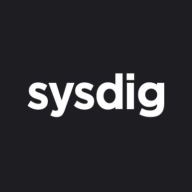


Sysdig Secure and Prevasio are prominent solutions in cybersecurity. Prevasio is favored for its features, while Sysdig Secure excels in pricing and customer support.
Features: Sysdig Secure offers robust container security, comprehensive monitoring, and efficient threat detection. Prevasio provides strong vulnerability scanning, effective risk assessment, and superior threat identification.
Room for Improvement: Sysdig Secure requires improvements in alert tuning, integration flexibility, and interface usability. Prevasio needs better reporting capabilities, a more streamlined interface, and enhanced ongoing support.
Ease of Deployment and Customer Service: Sysdig Secure is known for straightforward deployment and responsive service. Prevasio, although having a longer deployment process, offers thorough support during setup but needs better ongoing support responsiveness.
Pricing and ROI: Sysdig Secure offers cost efficiency with a high ROI, appealing to budget-conscious buyers. Prevasio, while initially more costly, provides a high ROI due to its advanced features, making the price worthwhile for some users.
| Product | Market Share (%) |
|---|---|
| SentinelOne Singularity Cloud Security | 4.6% |
| Sysdig Secure | 3.1% |
| Prevasio | 0.2% |
| Other | 92.1% |



| Company Size | Count |
|---|---|
| Small Business | 44 |
| Midsize Enterprise | 21 |
| Large Enterprise | 53 |
| Company Size | Count |
|---|---|
| Small Business | 3 |
| Midsize Enterprise | 1 |
| Large Enterprise | 6 |
| Company Size | Count |
|---|---|
| Small Business | 5 |
| Midsize Enterprise | 2 |
| Large Enterprise | 3 |
SentinelOne Singularity Cloud Security offers a streamlined approach to cloud security with intuitive operation and strong integration capabilities for heightened threat detection and remediation efficiency.
Singularity Cloud Security stands out for its real-time detection and response, effectively minimizing detection and remediation timelines. Its automated remediation integrates smoothly with third-party tools enhancing operational efficiency. The comprehensive console ensures visibility and support for forensic investigations. Seamless platform integration and robust support for innovation are notable advantages. Areas for development include improved search functionality, affordability, better firewall capabilities for remote users, stable agents, comprehensive reporting, and efficient third-party integrations. Clarity in the interface, responsive support, and real-time alerting need enhancement, with a call for more automation and customization. Better scalability and cost-effective integration without compromising capabilities are desired.
What are SentinelOne Singularity Cloud Security's standout features?SentinelOne Singularity Cloud Security is deployed in industries needing robust cloud security posture management, endpoint protection, and threat hunting. Utilized frequently across AWS and Azure, it assists in monitoring, threat detection, and maintaining compliance in diverse environments while providing real-time alerts and recommendations for proactive threat management.
Prevasio is an agentless cloud-native application protection platform (CNAPP) that provides increased visibility into security and compliance gaps, enabling cloud operations and security teams to prioritize risks and ensure compliance with internet security benchmarks.
Prevasio combines cloud-native security with SRI International's proprietary AI capabilities and AlgoSec’s expertise in securing 1,800 of the world’s most complex organizations.
In the cloud, every second counts. Attacks move at warp speed, and security teams must protect the business without slowing it down. Sysdig stops cloud attacks in real time, instantly detecting changes in risk with runtime insights, a unique AI architecture, and open source Falco. Sysdig delivers live visibility by correlating signals across cloud workloads, identities, and services to uncover hidden attack paths. By knowing what is running, teams can prioritize the vulnerabilities, misconfigurations, permissions, and threats that matter most. From prevention to defense, Sysdig helps enterprises move faster and focus on what matters: innovation.
Sysdig. Secure Every Second.
We monitor all Cloud-Native Application Protection Platforms (CNAPP) reviews to prevent fraudulent reviews and keep review quality high. We do not post reviews by company employees or direct competitors. We validate each review for authenticity via cross-reference with LinkedIn, and personal follow-up with the reviewer when necessary.